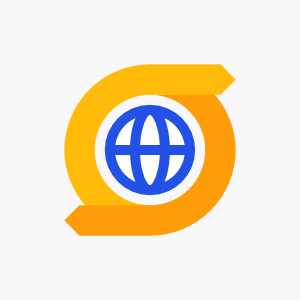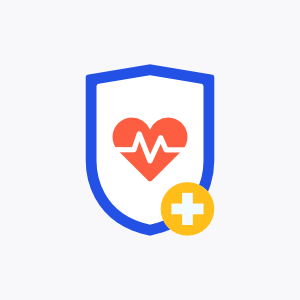The international organization of standards (ISO) is an independent, non-governmental organization that provides guidelines for organizations in agreement with globally accepted standards. In this article, we examine 7 ISO standards and the tremendous value they can add to your company.
“Great things happen when the world agrees.” – ISO
‘Rules of engagement’ are very important for the unification of market systems. Without them, markets will be flooded with products of poor quality. Some of these products will be dangerous and others, in industries like food and drugs, downright deadly. Worse still, companies will produce these products without having a framework to improve or guidelines from which to learn.
Without a unified framework, the likelihood is that everyone will have different interpretations and the global market will lack compatibility. Somebody has to set the standards.
Followed by over 1 million companies in the world, the ISO provides globally recognized standards that regulate what organizations need to do, and how best they can do them, to produce quality products that customers will love and buy.
There are over 20,000 ISO standards. Some of the most relevant for manufacturers are:

ISO 14000 –
Environmental
Management

ISO 50000 –
Energy Management

ISO 45000 –
Occupational Health
& Safety Management

ISO 31000 –
Risk Management

ISO 26000 –
Social Responsibility

ISO 9000 –
Quality Management

ISO 27000 –
Information Security
Management
ISO 26000 has significant popularity among organizations in Europe and East Asia.
ISO 14000: Environmental Management
The ISO 14000 is the family of standards that manages the environmental impact of an organization’s processes, products, or services. The standard is aimed at reducing pollution and provides a framework for organizations to set environmental targets and work towards achieving these targets.
The set targets may vary across organizations and will depend on their technological, financial, and operational situation. To achieve its target, organizations are encouraged to employ a holistic approach with effective communication strategies from top to bottom.
They are guided to remind employees of their responsibilities towards the environment and train them to carry out these responsibilities. Also, an organization should measure its results to determine whether or not their environmental targets have been achieved, and in the case of non-conformance, devise a clear course of action.
The most popular standard in this family of 13 is the ISO 14001 and its 2015 update, the ISO 14001:2015 is the only member that carries a certification. More than 300000 certifications have been issued globally.
ISO 45000: Occupational Health and Safety Management
The ISO 45000 family provides a framework for organizations to implement an occupational health and safety management system (OHASMS) in order to prevent workplace accidents and injury. By placing emphasis on hazard management and worker awareness, the standard provides guidelines for organizations to cultivate a safe workplace where the physical and mental health of workers is prioritized.
Workers are encouraged to take up an active role in their safety and management is advised to conduct safety training for workers besides providing them with a safe working environment – consistent with global labour requirements. Prequel to this, management will devise policy and strategic objectives to reduce the likelihood of hazard occurrence and after thorough analysis of occupational hazards, introduce control and recovery measures to minimize the effect of hazard release.
The most popular standard in this family of 13 is the ISO 14001 and its 2015 update, the ISO 14001:2015 is the only member that carries a certification. More than 300000 certifications have been issued globally.
ISO 26000/ SA 8000: Social responsibility
This standard provides guidelines for incorporating social responsibility into an organization’s affairs. Unlike ISO 14001 (Environmental management) and 45001 (occupational health and safety), it cannot be certified to and only spells out the boundaries of social responsibility and what it means to be a socially responsible organization in the 21st century. It is a voluntary standard and ISO has predetermined it to serve as ‘a guide to integrate social responsibility into their {organization’s} values and practices’. Ideally, this guide should translate into action.
The seven core subjects pertaining to social responsibility in ISO 26000: 2010 are:
- Organizational governance
- Human rights
- Labour practices
- The environment
- Fair operating practices
- Consumer issues
- Community involvement and development
- Social performance leading to sustainable development
ISO 26000 has significant popularity among organizations in Europe and East Asia.
ISO/ IEC 27000: Information Security Management
This family of standards provides the basis for an information security management system that guards against cyber threats and online hazards. The ISO 27001: 2013, the only standard in this series that carries a certification, is a management system that explains how organizations can guard against nouveau industrial espionage to protect their information assets. There are over 16 standards under this family – each having a similar framework but unique application.
The newest member is the ISO 27701: 2019. It was created in response to the GDPR and focuses on the implementation of a privacy information management system in a world where data breaches have become the norm.
ISO 50000: Energy Management
The ISO 50000 family provides a structure for organizations to implement an Energy Management System (EnMS) that encompasses energy usage, security, and efficiency. Its member, ISO 50001: 2018 carries a certification and was developed for ‘organizations committed to addressing their impact, conserving resources, and improving the bottom line through efficient energy management’.
The aim of this standard is to push energy management to the forefront and support organizations to conserve the earth’s non-renewable energy sources as well as reducing over-dependence on fossil fuels. It encourages companies to enact more environmentally friendly processes and reduce their CO2 emissions in line with industry and global expectations.
ISO 50001 is one of ISO’s fastest-growing standards having a growth rate of 90.8% between 2015 and 2017.
ISO 31000: Risk Management
This is a no-certification standard that provides a framework for managing risks and uncertainty. It details a set of guidelines for an all-inclusive risk management system that uses the opportunity and threat analysis to identify risk, rank the likelihood of its occurrence, and take action to mitigate the risk.
The risk may be far-ranging and include: operational, economic, security, and compliance. This standard details the nuts and bolts of risk management with clear and actionable directions that reduces the chances of failure.
So far, 5 standards have been published in this family with 4 additional standards currently under development.
ISO 9000: Quality Management
The ISO 9000 family provides a structure for organizations to develop a quality management system (QMS) and consistently produce high-quality products that satisfy the demand of customers. First published in 1987, it covers the regulatory requirements for quality processes and can be tailored to enhance quality in a particular department within the organization.
ISO 9001 is ISO’S most popular standard and currently has over 1 million organizations certified.
Industry leaders prioritize ISO standards to build organizational protocols
Standardization has improved the quality of products in the market and their compatibility across the globe. Customers now have a better shopping experience with a variety of high-quality products and services to choose from in a market sphere where prices are a fairer reflection of a product’s quality. For an organization, some of the benefits of conforming to ISO’s standards include:
- Increased employee morale: ISO standardization empowers your workers to perform their best work with clearer job descriptions and a standardized procedure to follow. Consequently, they know exactly what they need to do, and make fewer mistakes doing so.
- Enhances efficiency: A predetermined (and accurate) guide for problem-solving reduces waste in your organization besides saving time and money that will otherwise have been invested in the wrong solution.
- Better decision making: Your employees and management team can skip gut feelings and use facts to make decisions centered on professional guidelines stipulated in the standards.
- Market access: Standardization will open your organization to new markets as some customers, potential partners, and (most) Government agencies will only do business with an organization that is ISO certified or at least one that is committed to the standards.
- Increased revenue: Naturally, an enhanced efficiency will translate to more revenue. Also, by unlocking new market potentials for your organization, more revenue streams are opened up. For example, companies with ISO 9001 certifications are paid 7% more on average than their non-certified counterparts.
How Maximl can help
Maximl’s Connected Worker platform allows organizations to set standards and effectively monitor compliance to these standards.

Digitize thousands of rigid paper-based SOPs and covert them into interactive work instructions that can be deployed within weeks.

Trigger corrective actions based on deviations recorded in key metrics.

Conduct digital inspections across the value chain- from industrial assets, workshops, warehouses, to contract partner locations.

Leverage rich analytics to continuously enhance workforce performance with digital implementation of Kaizen, Six Sigma and Lean initiatives.
Request a demo today!
To book a demo, please visit maximl.com or, email us at hello@maximl.com
Download content

This content is locked
Please enter the following details to unlock the content



